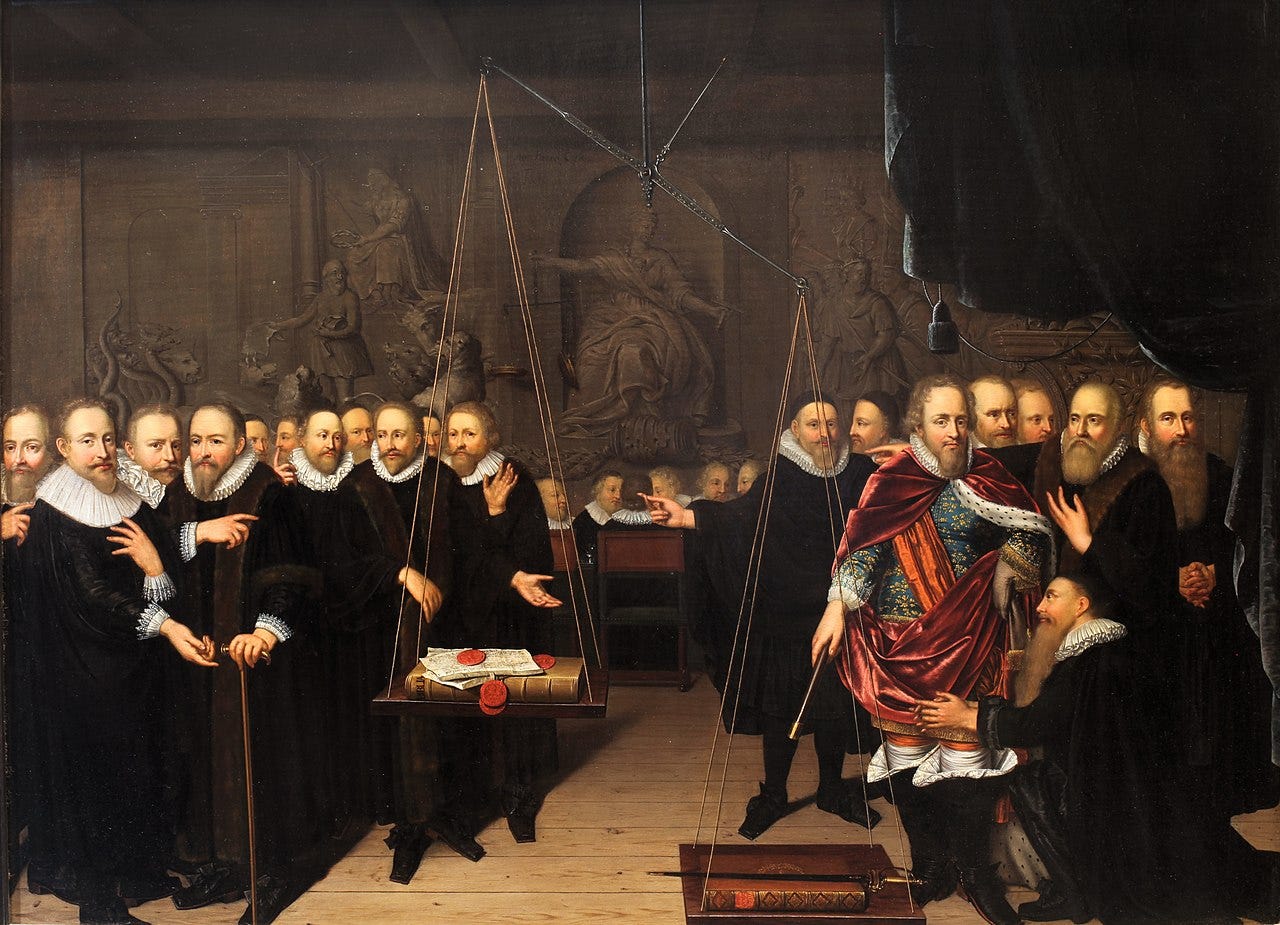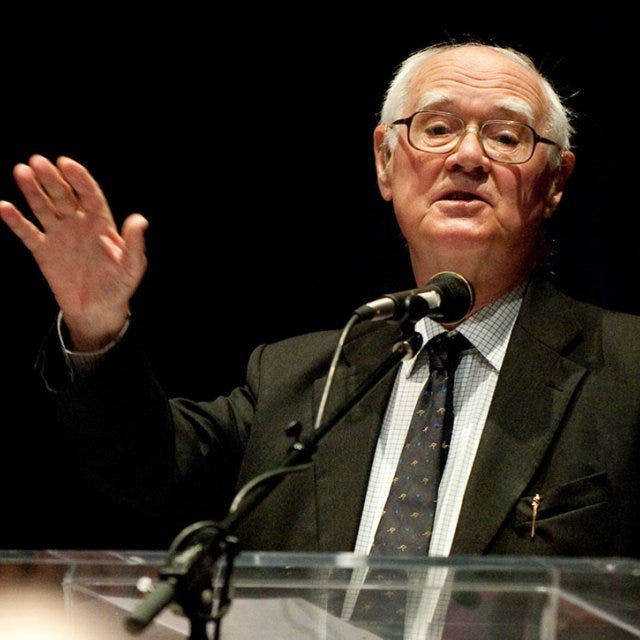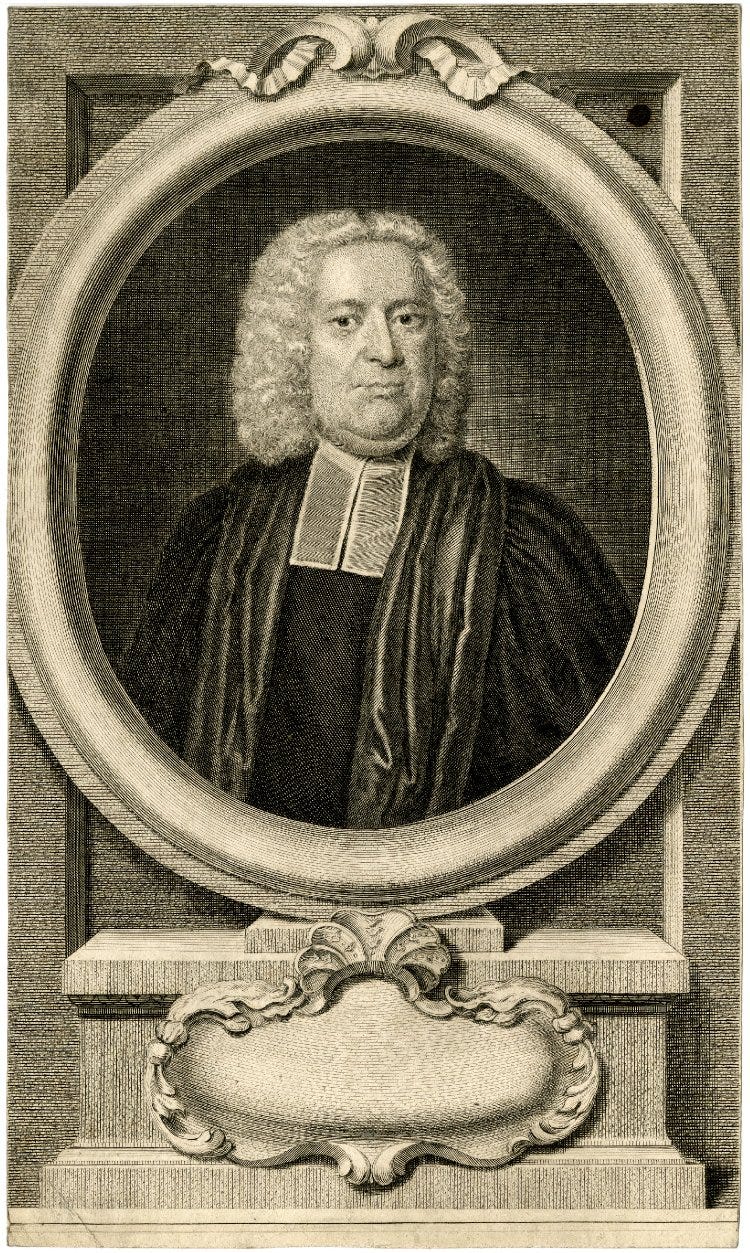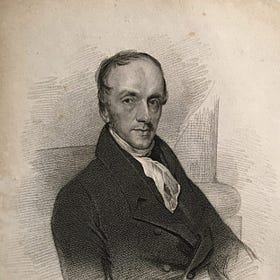The Changing Epicenters of Arminian Systematic Theology
A Bird’s Eye View
John Calvin famously penned the greatest systematic theology textbook of the Protestant Reformation. While it was not the first Protestant systematic, first place going to the Lutheran Philip Melanchthon, Calvin, like Melanchthon before him, set the precedent for his theological tradition to produce an unending amount of systematic theology textbooks. In a similar manner, Thomas Aquinas, the greatest systematizer of Medieval theology, likewise set a historic precedent inspiring generations of Roman Catholics to follow suit and do the same. Thus, the Catholic, Calvinist and Lutheran worlds are full of unending gold mines of systematic theology textbooks.

However, within the story of Arminianism, a gloomier tale is to be told, one warranting explanation. James Arminius, the namesake of Arminianism, did not live long enough to write his own systematic theology textbook. While we do happily have his Disputations given while at the University of Leiden, which do cover most of the topics found in a systematic theology, the truth remains that the untimely death of Arminius at age 49 prevented him from writing his own textbook that could have rivaled Calvin’s Institutes. To make matters worse, Simon Episcopius, his primary successor, likewise died prior to completing his own magnum opus, thereby leaving the world the first Arminian systematic theology textbook unfinished and incomplete!1 Unfortunately, our tragic story does not end there. Etienne (Stephen) de Courcelles, the primary successor to Episcopius, also died prior to finishing his systematic theology! Thus, Arminianism suffered from losing all three of its primary thinkers and leaders to untimely deaths in successive order.
It is not until the fourth generation of leadership that the Remonstrants, or Dutch Arminians, were able to produce a fully complete and finished systematic exposition of their faith: Philip van Limborch’s Christian Theology. However, by this time, Remonstrant theology had greatly changed since the original days of James Arminius. There are many reasons why Arminianism is so greatly misunderstood and poorly defined. There is no doubt that this constant delay and early failures to flesh out Arminianism in systematic form and in logical progression was one of those contributing factors.
The General Baptists, the Remonstrants, and the Numbers Game
The tragedy of Arminianism continues. Underappreciated and often ignored by much of the broader church, there was a small sect of Arminian Baptists known as General Baptists, and later, their successors of the faith, the Freewill Baptists. The founders of the General Baptists, John Smyth and Thomas Helwys, like Arminius before them, did not write out a comprehensive explanation of their faith backed by a series of arguments in favor of their position and counterarguments to objections. In other words, they did not pen a systematic theology textbook. However, Thomas Grantham, an early General Baptist did write Christianismus Primitivus, or the Ancient Christian Religion, his magnum opus. While not a systematic theology textbook per se, it is the closest to one that was written by an early General Baptist.
Then there is the numbers game. Given how small and persecuted the early Baptist were, had they penned a systematic theology—even if it was legitimately a good one—the chances are nobody outside their own tradition would have read it. In the 17th and 18th centuries, to be a Baptist was to be a social outcast. The numbers game likewise applies to the Remonstrants. The Remonstrants were a minority in the Netherlands and were defeated at the Synod of Dort—thereby becoming the scourge of the Reformed world and forever (wrongly) labeled as Socinians and Pelagians. However, with the greatest of ironies, it is precisely because they were placed under a microscope by the Synod of Dort, the closest Protestantism ever came to having an ecumenical council, the entire eyes of the Protestant world were upon the Remonstrants. Between that microscope, and the fact that the Synod of Dort expelled them out of the Netherlands which in turn helped them spread their message across Europe while in exile, the Remonstrants had a disproportionate effect and influence upon the wider church in the midst of the Dutch Golden Age of economic prosperity.

This is why, despite their small numbers, they had such an incredible influence upon the wider church—something the early Arminian Baptists did not experience. This is also why the more orthodox systematic theology of Adriaan van Catenburgh is less known than his predecessor and Episcopius’ nephew, Philip van Limborch. By the time of Limborch, the Synod of Dort was already becoming a distant memory. The Remonstrants had long since returned to the Netherlands, and the Netherlands itself was no longer the economic powerhouse it once was. After Limborch, the numbered Remonstrants largely faded into obscurity.
England
This now brings our story to the British Isles and to the Church of England. With the demise of the Remonstrants and the irrelevancy of the Baptists, the Church of England became the epicenter for Arminian theology. While Peter Baro, the Father of English Arminianism, predates James Arminius, the Father of Dutch Arminianism, the arguments over the five disputed points known as the Quinquarticular Controversy in England never reached the fervor and intensity as it did in the Netherlands. But there is a deeper reason, a two-folded reason, why Arminians in the Church of England failed to produce their own systematic theologies.
To begin with the primary and most important reason, Anglicans, whether Arminian, merely Anti-Calvinist, moderate Calvinist, hardline Calvinist, Anglo-Catholic forerunners, Anglo-Catholics, firmly Protestant, barely Protestant, neither Protestant nor Roman, liberal or conservative, and everything else in between, do not normatively “do theology” via systematic theology textbooks and robust confessions of faith or creeds. Rather, they tend to “do theology” via homilies (sermons) and liturgy. The Church of England is not united by a set of doctrines or common beliefs; the Thirty-Nine Articles from the very beginning were broadly written to accommodate multiple viewpoints and were only given lip service to in the 18th century, openly ignored by the 19th century and downright disparaged in the 20th century. Rather, the Church of England is held together by its shared ecclesiology and shared liturgy. The Church of England does not look for unity in a shared set of ideas, a shared doctrine, which is to say a shared comprehensive worldview, but rather they look for unity by a shared episcopacy and a shared Book of Common Prayer. Their unity is based upon institutional unity, not doctrinal unity.
However, in fairness to the Anglicans, a few, such as Thomas Stackhouse, did pen a systematic theology in the early 18th century. More importantly, a premier 17th century theologian, Thomas Jackson, wrote out a massive twelve volume commentary on the Apostle’s Creed which covered most of the topics a systematic theology textbook normally covers.2
The secondary reason why Anglicans have not produced much in the realm of systematic theology was their overreliance upon the Remonstrants. Largely forgotten and unknown by today’s academic scholarship, the writings of Episcopius, Courcelles, and Limborch were widely known and read among the High Churchman including, and especially, their three respective systematic theology textbooks. The five ‘disputed points’ never reaching the height and passion of debate in England as it did in the Netherlands explains why Anglican Arminians did not produce as many writings upon this subject matter. Likewise, because the Dutch did write so prolifically upon these five contended points, the English Arminians were happily willing to defer to the Dutch Arminians for guidance on these issues. (And in return, Remonstrants such as Gerhard Vossius and Hugo Grotius were happy to defer to the English Arminians for guidance and for their expertise on the writings of the Early Church Fathers.)
Wesleyan-Arminianism
It is only now in our tragic story of Arminian Systematic Theology that the night gives way to the break of dawn—the arrival of Methodism. With the arrival of the Wesley family and of their Methodists societies, the epicenter of Arminianism now shifts away from the Church of England and into the Methodist camp. John Wesley, being an Anglican priest and in keeping with that tradition, wrote no systematic theology textbook. However, unlike the tragedy to befall the Remonstrants over a century earlier, the early Methodist Richard Watson, when he set out to write the first ever Wesleyan-Arminian systematic theology textbook, not only finished it without inconveniently dying beforehand, but he also succeeded well in the quality of its production. This set into motion a domino effect upon the Methodist world. Beginning with the production of Richard Watson’s Theological Institutes in the 1820s, Methodist theologians began their quest to hammer out a comprehensive worldview and Methodist identity.
From the 1820s to the 1910s, Methodist theologians produced roughly 40 systematic theology textbooks, the greatest of which culminated in William Burt Pope’s three volume A Compendium of Christian Theology.3 It was not until the late 19th century when Methodism most disgustingly committed apostasy by embracing Theological Liberalism. Coinciding with that shift, Methodist theologians stopped caring about comprehensive explanations and defenses of their worldview. With the arrival of Theological Liberalism and Higher Criticism, Evangelical Arminianism began to die out among the people called Methodists.
Next in our story is the arrival of the American Holiness Movement and of Pentecostalism in the late 19th and early 20th centuries. Edgar Painter Ellyson, a general superintendent in the Church of the Nazarene, produced the first little systematic theology textbook in the Holiness tradition. However, it is to the early-mid twentieth century theologian, H. Orton Wiley, that the title of chief systematic theologian of the Wesleyan-Holiness movement goes to. With the fall of the mainline Methodists, the epicenter of Arminian theology shifted to the American Holiness Movement. However, by the late 20th century, Wesleyan-Holiness systematics increasingly became more liberal, and the Arminian epicenter of systematic theology began to drift away from them.

Among the early Pentecostals, ‘robust scholarship’ and ‘an intellectually comprehensive worldview’ were phrases unfamiliar to them. It was not until the second half of the 20th century that Pentecostals began to work out their theology in a more comprehensive manner, and even in more recent times, an intellectually robust systematic presentation of their doctrines and beliefs.
Arminianism Today
Where then, does the current epicenter of Arminian theology lie? Arguably, it is currently in the hands of the Baptists. The 20th century saw a surge in Baptist membership, propelling them to become the largest branch of Protestantism in the United States. They have travelled a long journey since the early days of their persecuted and marginalized ancestors. The small Free-Will Baptists have produced numerous works in recent times on Arminian theology, including their primary systematic by F. Leroy Forlines, but more importantly than that, the Calvinist/Arminian debate that is raging throughout the Southern Baptist Convention has brought the issue to the forefront of attention once more. This has helped solidify an Arminian base within Baptist circles, including the production of their foremost systematic theology textbook that is Anti-Calvinistic, Adam Harwood’s Christian Theology.
However, like the so-called Arminianism of the Church of England from the English Civil Wars of the 1640s, and up until the arrival of Methodism in the 1730s, there is a concern about the authenticity of the so-called Arminianism of the SBC. Are the Anti-Calvinists in the Baptist world truly Arminian, or are they merely Anti- or Non-Calvinists? Among Southern Baptists who askew the Calvinist label, a new term has arisen, Provisionism. But the Provisionists, like certain wings of late 17th and early 18th century Anglican High Churchmanship, is simply too Pelagian to be considered genuine Arminians. Albeit like the Anglicans centuries before them, there are certain Southern Baptists wings that are genuine Evangelical Arminians. Nevertheless, this leaves the door open for yet another shift in the epicenter of Arminianism in general and Arminian systematics in particular.
As Sidney Johnson has already correctly noted in a previous article on The Earnest Wesleyan, there has been a recent re-birth in Methodist systematic theology textbooks.4
Institutes of Wesleyan Religion
In the five new systematic theologies listed above, we see several different visions emerge. Some of the brightest scholars in the Wesleyan world are contributing to these volumes. It certainly does feel like there is a revival of the writing and publishing of Wesleyan systematic theology.
This is a much-welcome change that is long overdue. However, will future systematic theologians, converging round the new Global Methodist Church throughout the 21st century, be genuine evangelical Arminians, or will they be merely non-Calvinistic in their orientation? This remains to be seen, and only time will tell.
Despite this uncertainty, and to conclude on a more optimistic note, with the formation of a coalition of Arminian Baptists, the rise in Pentecostal and Charismatic scholarship, the re-birth of Methodism in the Global Methodist Church, and the continuing contributions from the Holiness camp, the future of Arminianism is looking bright.
Andrew V. Sullivan, is a Ph.D. Candidate (ABD) in History at Liberty University and a layman in the Global Methodist Church. His dissertation paper is on the topic of Original Sin in the Theology of John Wesley and Jonathan Edwards.
For all of the names and citations of the Arminian systematic theology textbooks mentioned in this article, see my annotated bibliography, https://francisasburysociety.com/systematic-theology-in-the-arminian-theological-tradition/
It should also be noted that another Anglican, Francis J. Hall, authored what is probably the Church of England’s most extensive systematic theology textbook ever penned, Dogmatic Theology (10 vols., early 20th century). However, this work was written not from an Arminian nor Calvinistic perspective, but from an Anglo-Catholic angle. My point is, even though the Anglicans are not known for producing systematic theologies, nor do they have as many as one finds in other theological traditions, the fact remains that they do have them. The same argument can be made about Eastern Orthodoxy as well.
I would also like to add to the reader’s attention my own personal favorite systematic theology, Elements of Divinity by the arch-conservative Thomas N. Ralston of the Methodist Episcopal Church South. While this was not the first systematic theology textbook I read, having read others in bits and pieces, it was the first ever systematic theology I read from cover to cover. It was Dr. Ralston’s Elements of Divinity that solidified me into the Wesleyan-Arminian camp.






As an elder in the UMC, who still falls on the conservative end of the spectrum, I have been thinking about systematic theology a lot over the past year. Thankful for this article and to know another person who believes in systematics in a Wesleyan framework.